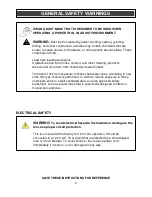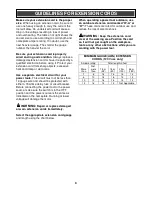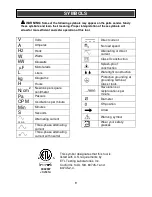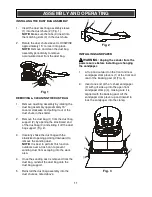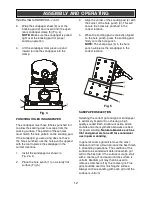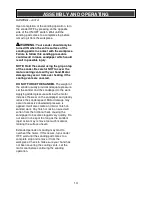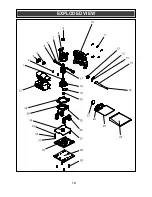
14
SANDING – cont’d
Upon completion of the sanding operation, turn
the sander OFF by pressing on the opposite
side of the ON/OFF switch. Wait until the
sanding pad comes to a complete stop before
removing it from the workpiece.
WARNING:
Your sander should only be
turned ON when the entire surface of the
sanding pad is in contact with the workpiece.
Failure to follow this sanding procedure
could result in loose sandpaper which could
result in possible injury.
NOTE: Hold the sander using the grip on top
of the sander. Be careful NOT to cover the
motor cooling vents with your hand. Motor
damage may occur from over heating if the
cooling vents are covered.
DO NOT FORCE THE SANDER. The weight of
the sander usually provides adequate pressure.
Let the sander and the sandpaper do the work.
Applying added pressure will slow the motor,
increase the wear on the sandpaper and greatly
reduce the sander speed. Motor damage may
occur if excessive downward pressure is
applied. It will also create an inferior finish on
sanded work. Any finish or resin on wood will
soften from the frictional heat, causing the
sandpaper to become clogged very quickly. Do
not sand in one spot too long as the sander’s
rapid action may remove too much material,
making the surface uneven.
Extended periods of sanding may tend to
overheat the motor. If this occurs, turn sander
OFF, wait until the sanding pad comes to a
complete stop and remove it from the
workpiece. Check to make sure your hand has
not been covering the cooling vents. Let the
motor cool before continuing the sanding
operation.
ASSEMBLY AND OPERATING
!
Summary of Contents for 241-9946
Page 16: ...EXPLODED VIEW 16...




